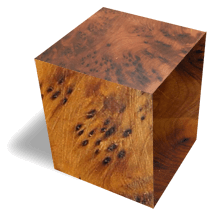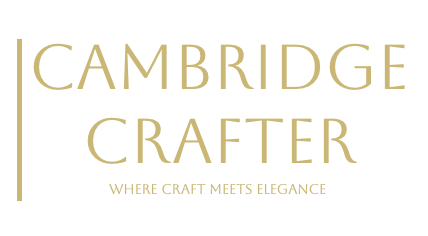
Thuya Burl
Thuya Burl, also known as Tetraclinis Burl, comes from the Tetraclinis articulata tree, a small evergreen conifer native to North Africa, particularly Morocco, Algeria, and Tunisia, with some presence in Malta and southeast Spain. It grows to 6–15 metres tall with a trunk diameter up to 50 cm, often found in semi-arid regions like the Atlas Mountains, thriving in rocky, calcareous soils. The tree, part of the cypress family, is also called sandarac or arar, and its resin is historically used for varnish.
The heartwood of Thuya Burl is a warm golden-brown to reddish-brown, often with darker streaks of amber or chocolate, featuring a chaotic, swirling grain pattern typical of burls. It’s packed with small knots, curls, and bird’s eye figures, creating a dramatic, three-dimensional effect that’s highly prized. The sapwood is a pale yellowish-white, distinctly separate. The texture is fine to medium, with a high natural lustre that polishes to a glossy finish, and the wood has a resinous, greasy feel due to its aromatic oils.
Thuya Burl has a density of around 650–750 kg/m³, making it moderately hard and durable, with good resistance to decay and insects thanks to its natural resins. These resins can make gluing tricky—degreasing with a solvent like white spirit is advised—but it turns, carves, and finishes beautifully, often needing just a clear coat to highlight its figuring. It’s prone to cracking if not dried slowly, and the irregular grain can cause tearout, requiring sharp tools.
When worked, Thuya Burl releases a strong, sweet, and spicy aroma, often described as cedar-like with a citrusy undertone, which can linger in the finished piece and act as a natural insect repellent. In the UK, it’s prized for luxury items like veneer, inlays, knife handles, pen blanks, and small decorative boxes, often used in high-end furniture or dashboards of luxury cars like Rolls-Royce. Its rarity and beauty make it a favourite for artisans seeking a unique, aromatic wood.
Thuya Burl is scarce and expensive due to overharvesting and limited natural range—Morocco tightly regulates its export, often requiring permits. While not listed on CITES, it’s considered vulnerable in some regions due to habitat loss. In the UK, it’s typically imported as small burls or blanks, making it a premium choice for bespoke projects where its stunning patterns and fragrance can be showcased.
